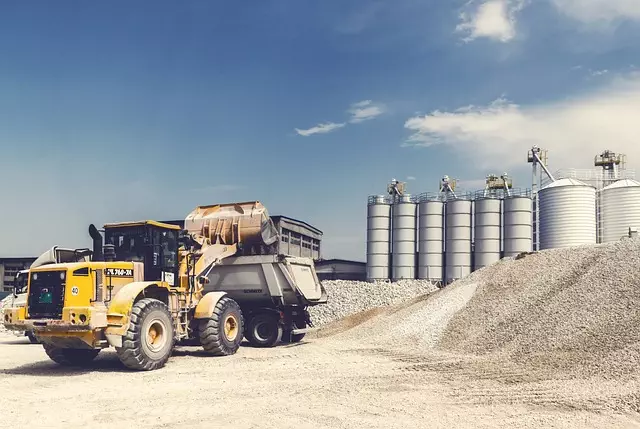Hazard recognition and assessment, a cornerstone of industrial hygiene, involves identifying and evaluating workplace risks to ensure worker safety. Through meticulous processes like exposure monitoring, organizations can manage and mitigate hazards effectively, creating healthier, more productive work settings. This discipline leverages advanced monitoring techniques to identify hazardous substances, set safe thresholds (Threshold Limit Values), and promote compliance with occupational safety standards. Effective communication and training empower employees to recognize risks, understand exposure limits, and foster a proactive safety culture. Regularly evolving exposure guidelines and monitoring ensure workplace safety adapts to advancements in industrial hygiene research.
Occupational exposure limits (OELs) are vital components of industrial hygiene, safeguarding workers from potential health risks. This comprehensive guide explores the intricate web of OELs, encompassing hazard recognition and assessment, as well as exposure monitoring techniques. From understanding foundational principles to setting safe thresholds for various substances, we delve into strategies for compliance and regulation adherence. Effective communication and training are also crucial topics, emphasizing their role in fostering a culture of safety. Lastly, we discuss continuous improvement methods for regularly reviewing and updating exposure guidelines.
- Understanding Occupational Exposure Limits: The Foundation of Industrial Hygiene
- Hazard Recognition and Assessment: Identifying Potential Risks in the Work Environment
- Exposure Monitoring Techniques: Measuring and Evaluating Workplace Hazards
- Setting Safe Thresholds: Determining Exposure Limits for Various Substances
- Compliance and Regulations: Ensuring Adherence to Occupational Safety Standards
- Communication and Training: Educating Workers on Exposure Limit Importance
- Continuous Improvement: Regularly Reviewing and Updating Exposure Guidelines
Understanding Occupational Exposure Limits: The Foundation of Industrial Hygiene
Hazard Recognition and Assessment: Identifying Potential Risks in the Work Environment
Hazard Recognition and Assessment is a critical step in ensuring occupational safety and health. It involves identifying potential risks within the work environment that could pose harm to employees. By employing principles of industrial hygiene, organizations can proactively mitigate these hazards before they result in adverse health effects or accidents. This process includes conducting thorough inspections, evaluating tasks, and understanding the unique characteristics of each workplace.
Effective hazard recognition requires a systematic approach, where potential sources of exposure are assessed based on their severity and likelihood. Exposure monitoring is a key technique used to measure and evaluate worker contact with hazardous substances or conditions over time. This data provides valuable insights that inform decision-making regarding necessary control measures, personal protective equipment, or regulatory compliance adjustments, ultimately fostering a safer work environment.
Exposure Monitoring Techniques: Measuring and Evaluating Workplace Hazards
Industrial hygiene plays a pivotal role in ensuring worker safety by employing various exposure monitoring techniques to measure and evaluate workplace hazards. These methods are instrumental in identifying potentially harmful substances, such as chemicals, dusts, or noise, at different stages of production processes. Professionals in industrial hygiene utilize advanced tools like air sampling devices, personal protective equipment (PPE), and noise meters to quantify exposure levels accurately.
Through hazard recognition and assessment, these techniques help determine if exposure limits are being exceeded. Once identified, appropriate controls can be implemented to minimize or eliminate risks. By regularly conducting exposure monitoring, organizations can comply with occupational safety standards, protect workers’ health, and foster a safer work environment, ultimately contributing to improved productivity and well-being on the job.
Setting Safe Thresholds: Determining Exposure Limits for Various Substances
Setting safe thresholds is a critical aspect of occupational health and safety, particularly in ensuring industrial hygiene. Exposure limits for various substances are determined through a comprehensive process that involves hazard recognition and assessment. This starts with identifying potentially harmful chemicals or agents present in the work environment, followed by evaluating their potential impact on worker health over time.
Experts employ methods like exposure monitoring to measure actual workplace exposures, using tools such as air sampling and biological monitoring. These data are then analyzed to establish threshold limit values (TLVs), which represent safe exposure levels for specific substances. TLVs guide employers in implementing controls to keep worker exposures below these limits, thereby minimizing risks and promoting a healthier work environment.
Compliance and Regulations: Ensuring Adherence to Occupational Safety Standards
Compliance with occupational safety standards is paramount in ensuring a healthy work environment. Industrial hygiene plays a pivotal role in this regard by focusing on hazard recognition and assessment, which involves identifying potential risks within the workplace and evaluating their severity. This process is crucial for implementing effective control measures to minimize or eliminate employee exposure to hazards.
Once hazards are identified and assessed, exposure monitoring becomes an essential tool. It involves measuring and analyzing worker exposure levels to ensure they do not exceed established occupational exposure limits. By adhering to these regulations, organizations can protect their employees from the adverse effects of hazardous substances, leading to improved health outcomes, increased productivity, and a safer overall work culture.
Communication and Training: Educating Workers on Exposure Limit Importance
Effective communication and training are vital components in ensuring workers understand and appreciate the importance of occupational exposure limits, which fall under the broader scope of industrial hygiene. By integrating hazard recognition and assessment into their daily routines, employees can actively participate in identifying potential risks in the workplace. This involves learning to recognize signs of hazardous substances or conditions, assessing their severity, and understanding the associated health impacts.
Training sessions should cover exposure monitoring techniques, enabling workers to take proactive measures. Educating them on the role of monitoring in measuring and controlling exposure helps foster a culture of safety. It empowers individuals to ask questions, report concerns, and take necessary actions to protect themselves and their colleagues, ultimately contributing to a safer work environment.
Continuous Improvement: Regularly Reviewing and Updating Exposure Guidelines
Occupational exposure limits are not static; they evolve as our understanding of industrial hygiene deepens and new research emerges. Continuous improvement in workplace safety requires a commitment to regularly reviewing and updating exposure guidelines. This dynamic approach ensures that the latest scientific knowledge is reflected in safety standards, allowing for more accurate hazard recognition and assessment.
Regular updates are facilitated by exposure monitoring, which plays a crucial role in identifying potential risks within specific industries. By continuously gathering data on worker exposures, experts can make informed decisions about revisioning guidelines to better protect employees from hazardous substances or conditions. This iterative process fosters a culture of safety where industrial hygiene remains at the forefront, safeguarding workers and promoting healthier workplaces.


